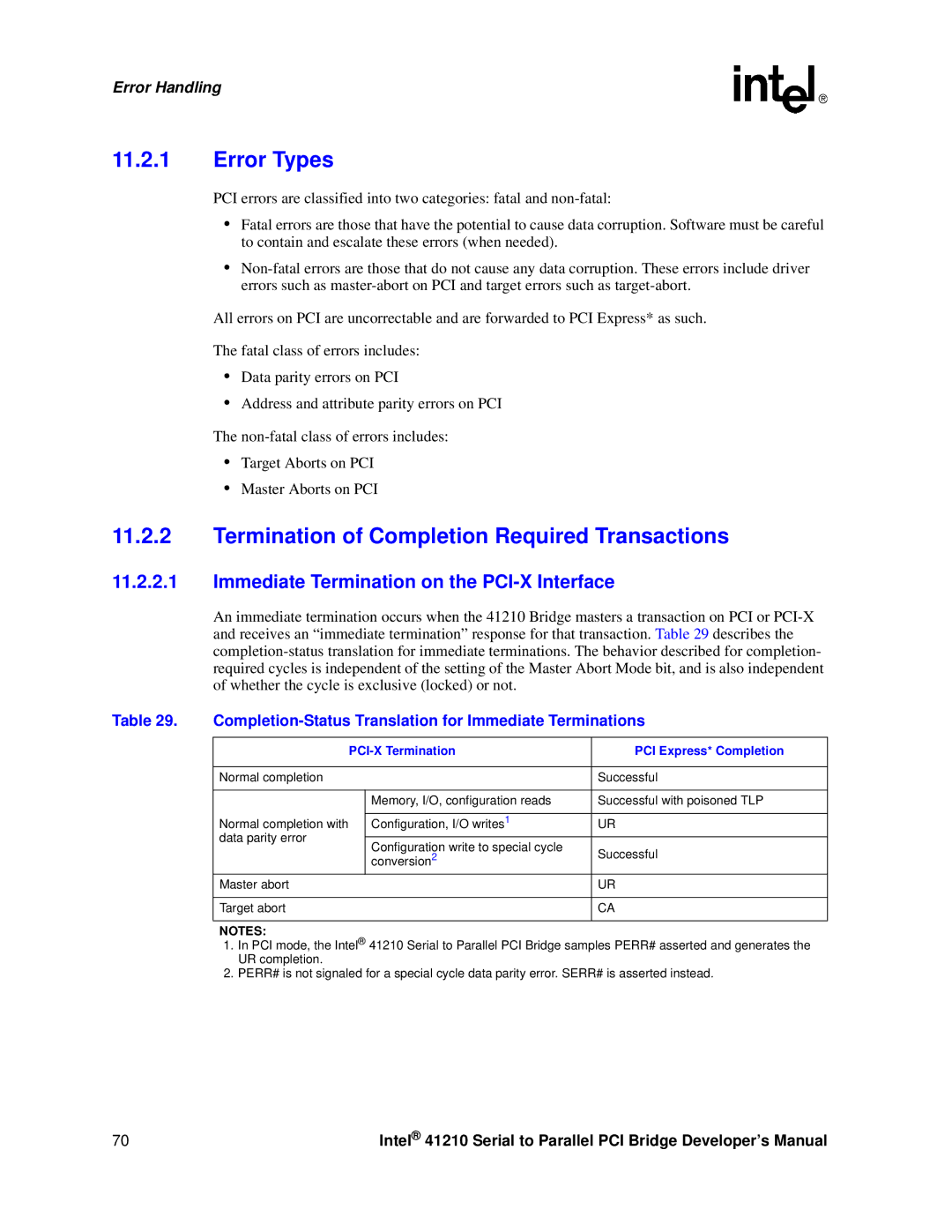Error Handling
11.2.1Error Types
PCI errors are classified into two categories: fatal and
•Fatal errors are those that have the potential to cause data corruption. Software must be careful to contain and escalate these errors (when needed).
•
All errors on PCI are uncorrectable and are forwarded to PCI Express* as such.
The fatal class of errors includes:
•Data parity errors on PCI
•Address and attribute parity errors on PCI
The
•Target Aborts on PCI
•Master Aborts on PCI
11.2.2Termination of Completion Required Transactions
11.2.2.1Immediate Termination on the PCI-X Interface
An immediate termination occurs when the 41210 Bridge masters a transaction on PCI or
Table 29. |
| |||
|
|
|
|
|
|
|
| PCI Express* Completion | |
|
|
|
|
|
| Normal completion |
|
| Successful |
|
|
|
|
|
|
|
| Memory, I/O, configuration reads | Successful with poisoned TLP |
|
|
|
| |
| Normal completion with | Configuration, I/O writes1 | UR | |
| data parity error |
|
|
|
|
| Configuration write to special cycle | Successful | |
|
|
| ||
|
|
| conversion2 | |
| Master abort |
|
| UR |
|
|
|
|
|
| Target abort |
|
| CA |
|
|
|
|
|
NOTES:
1.In PCI mode, the Intel® 41210 Serial to Parallel PCI Bridge samples PERR# asserted and generates the UR completion.
2.PERR# is not signaled for a special cycle data parity error. SERR# is asserted instead.
70 | Intel® 41210 Serial to Parallel PCI Bridge Developer’s Manual |
